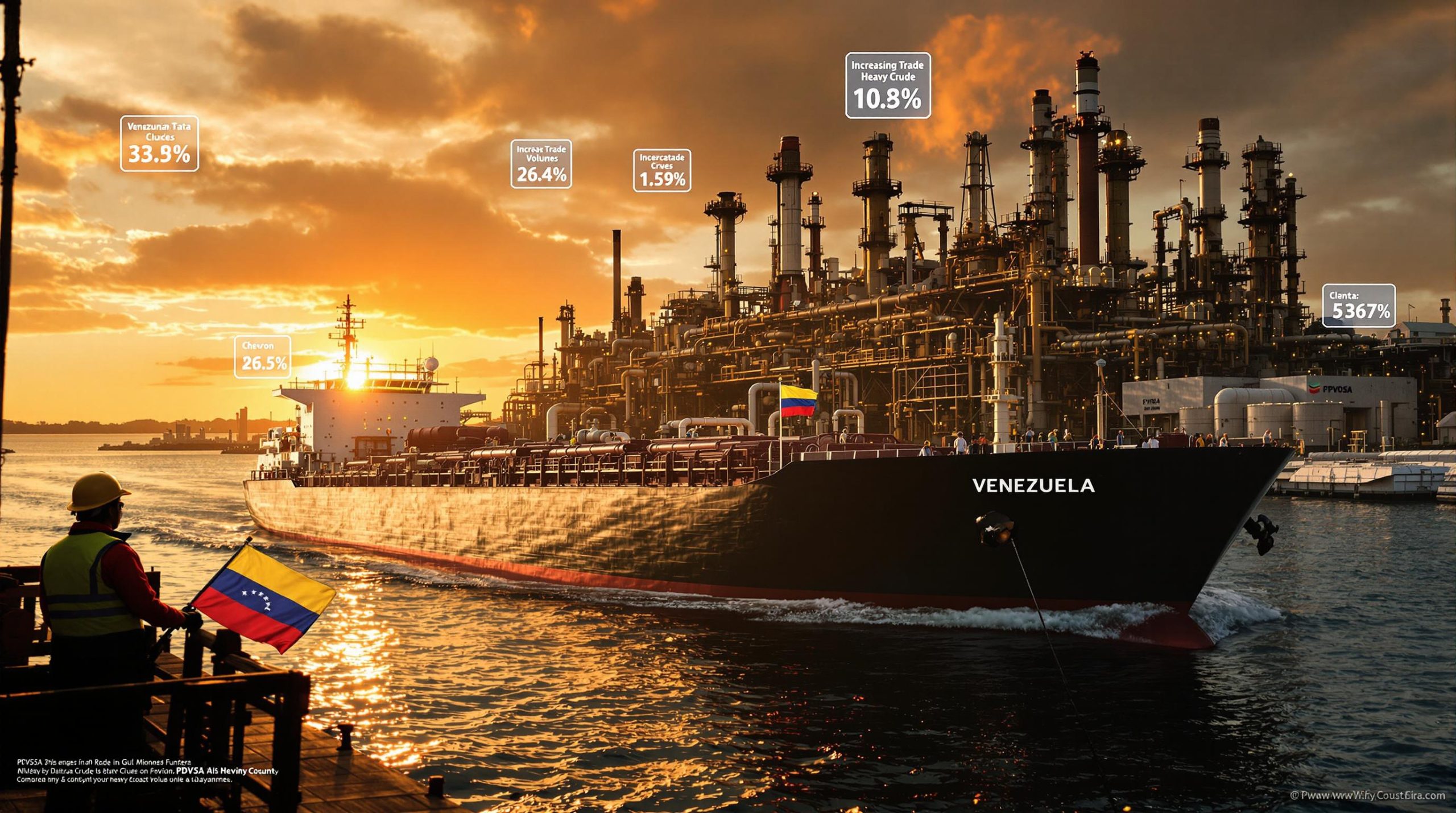What is Sibanye-Stillwater's Latest Acquisition?
Sibanye-Stillwater, a leading precious metals mining company, has made a strategic move to strengthen its position in the recycling sector through the acquisition of Metallix Refining. The company has agreed to purchase this US-based metals recycling business for $82 million, marking a significant expansion of its "urban mining" initiatives.
This acquisition represents a clear shift toward recovering valuable metals from industrial waste streams rather than relying solely on traditional mining operations—a strategy that aligns with growing industry trends toward sustainability transformation and resource efficiency.
Key Details of the Metallix Acquisition
- Purchase price: $82 million
- Location: North Carolina, USA
- Business focus: Recovery of precious metals from industrial waste
- Expected closing: Third quarter of 2025 (pending regulatory approval)
CEO Neal Froneman expressed enthusiasm about the deal, stating: "We are excited to be adding Metallix to our existing recycling footprint – the scale, technology and know-how adds positively to our existing recycling operations and advances our urban mining strategy."
The acquisition demonstrates Sibanye-Stillwater's commitment to diversifying its operations beyond traditional mining and creating a more balanced business model that can withstand market fluctuations in the precious metals sector.
How Does Metallix Contribute to Sibanye's Recycling Portfolio?
Metallix Refining brings substantial recycling capacity and specialized technological capabilities to Sibanye-Stillwater's existing operations. With two advanced recycling facilities in North Carolina, Metallix has established itself as a significant player in the industrial waste recycling sector.
The company specializes in processing waste materials containing valuable precious metals, extracting these metals through sophisticated refinement processes that maximize recovery rates while minimizing environmental impact.
Metallix's Operational Performance
Metallix's operational statistics highlight its significant contribution to the urban mining landscape:
- Annual processing capacity: 4.2 million pounds of waste material (based on 2024 data)
- Precious metals recovery (12-month period through December 2024):
- 21,000 ounces of gold
- 874,000 ounces of silver
- 48,000 ounces of palladium
- 48,000 ounces of platinum
- 4,000 ounces of rhodium
- 3,000 ounces of iridium
- 263,000 pounds of copper
These recovery figures represent substantial value in today's market and demonstrate the potential profitability of well-executed urban mining operations. The diverse range of metals recovered also provides Sibanye-Stillwater with exposure to multiple market segments, reducing dependency on any single metal price.
The acquisition complements Sibanye-Stillwater's existing recycling operations and provides additional technical expertise that can be leveraged across its growing recycling network.
Why is Urban Mining Becoming a Strategic Priority?
The Growing Importance of Metal Recycling
Urban mining—the systematic recovery of metals from waste streams, used products, and industrial byproducts—has emerged as a strategic priority for forward-thinking mining companies for several compelling reasons:
- Resource sustainability: As primary ore grades decline globally, recycling offers access to concentrated sources of metals without new extraction
- Environmental benefits: Recycling typically produces 75-95% lower carbon emissions compared to traditional mining operations
- Supply chain security: Domestic recycling reduces dependence on imported raw materials
- Economic efficiency: Recycling certain metals can require up to 95% less energy than primary extraction
- Circular economy alignment: Supports global sustainability goals and ESG investment criteria
The economics of urban mining have become increasingly favorable as technological improvements have enhanced recovery rates and as environmental regulations have tightened around traditional mining practices.
Sibanye-Stillwater's Recycling Strategy Evolution
The Metallix acquisition represents the latest step in Sibanye-Stillwater's expanding recycling strategy:
- Previous milestone: Acquisition of the Reldan Group of Companies in 2023
- Geographic expansion: Growing presence across multiple US regions
- Operational integration: Creating synergies between recycling facilities
- Logistics enhancement: Broadening sourcing capabilities and regional reach
By systematically building its recycling portfolio, Sibanye-Stillwater is positioning itself as a leader in the circular economy for precious metals. This approach helps insulate the company from some of the risks associated with traditional mining, including resource depletion, increasing extraction costs, and stricter environmental regulations.
"The addition of Metallix advances our urban mining strategy and will further strengthen the group's recycling network," noted Froneman, highlighting the strategic importance of this acquisition within the company's broader vision.
What Synergies Does the Deal Create?
Integration with Existing Operations
The Metallix acquisition is expected to create significant operational and financial synergies with Sibanye-Stillwater's existing recycling operations in:
- Montana: Existing precious metals recycling facility
- Pennsylvania: Operations acquired through the Reldan purchase
These synergies will likely manifest in several key areas, including shared technology, optimized logistics, and enhanced market access. CEO Neal Froneman highlighted expectations of "significant value uplift" through these synergistic relationships.
Strategic Benefits of the Expanded Recycling Network
The combined recycling operations provide Sibanye-Stillwater with several strategic advantages:
- Expanded geographic footprint: Multiple facilities across different US regions create a national network
- Enhanced logistics capabilities: More efficient collection and processing networks reduce transportation costs
- Broader waste stream access: Ability to source from more diverse industrial sectors increases supply security
- Technology transfer opportunities: Sharing of specialized recycling techniques improves recovery rates
- Scale economies: Greater processing volumes and operational efficiencies lower unit costs
By integrating these operations, Sibanye-Stillwater can optimize its entire recycling value chain, from waste collection to refined metal production. This vertical integration approach provides greater control over quality and costs while maximizing value capture at each stage of the process.
The company's growing recycling network also creates a more balanced business model that can better withstand market volatility in the precious metals sector. When primary mining faces challenges due to price fluctuations or operational issues, the recycling segment can provide stability through its different cost structure and market dynamics.
How Does This Fit Into Industry Trends?
Precious Metals Recycling Market Growth
The acquisition aligns perfectly with broader industry trends toward increased recycling of precious metals:
- Growing e-waste volumes: Global e-waste production is approaching 60 million tons annually, containing valuable recoverable metals
- Industrial waste recovery: Manufacturing industries are increasingly focused on extracting value from production byproducts
- Automotive catalytic converters: A major source of platinum group metals, with over 500,000 tons recycled annually worldwide
- Jewelry recycling: Consumer awareness of precious metal reuse has driven growth in this segment
The global precious metals recycling market is projected to continue its rapid expansion as environmental considerations, resource scarcity, and economic factors converge to make recycling increasingly attractive compared to primary extraction.
Competitive Positioning
This acquisition strengthens Sibanye-Stillwater's position in the metals recycling sector in several ways:
- Diversification beyond mining: Reducing dependence on traditional extraction mitigates resource depletion risks
- Value chain integration: Controlling more stages of the metals lifecycle improves margins and market influence
- Market differentiation: Positioning as a sustainability-focused metals company appeals to ESG-conscious investors
- Risk mitigation: Creating multiple revenue streams across different business models enhances financial stability
Sibanye-Stillwater is not alone in recognizing the strategic importance of recycling. Other major mining companies and specialized recyclers are also expanding their presence in this space, creating a competitive landscape that rewards scale, technological innovation, and operational efficiency.
By making this acquisition, Sibanye-Stillwater has demonstrated its commitment to being a leader in the mining industry evolution toward a circular economy for precious metals, positioning itself at the forefront of an industry in transition.
What Are the Environmental Implications?
Sustainability Benefits
The expansion of Sibanye-Stillwater's recycling operations offers several significant environmental advantages:
- Reduced mining impact: Less need for new extraction activities minimizes habitat disruption and water pollution
- Energy efficiency: Recycling platinum group metals typically requires 70-90% less energy than primary mining
- Waste reduction: Diverting materials from landfills reduces the environmental footprint of industrial waste
- Carbon footprint: Recycling operations generally produce substantially lower greenhouse gas emissions
- Resource conservation: Extending the useful life of already-extracted metals preserves natural resources
These environmental benefits are increasingly important to investors, regulators, and consumers who are demanding greater sustainability from the mining and metals sector. Companies that can demonstrate genuine environmental improvements through their business models often enjoy advantages in access to capital, regulatory approvals, and customer preference.
Additionally, the urban mining approach addresses growing concerns about the environmental and social impacts of traditional mining in sensitive ecosystems and communities. By recovering metals from waste streams rather than extracting them from the earth, companies can significantly reduce their overall environmental footprint.
As regulatory frameworks around carbon emissions and waste management continue to tighten globally, Sibanye-Stillwater's expanded recycling operations position the company advantageously for compliance with current and future environmental regulations.
What's Next for Sibanye-Stillwater?
Future Outlook
While specific future plans weren't detailed in the acquisition announcement, the Metallix purchase suggests several potential strategic directions for Sibanye-Stillwater:
- Further recycling acquisitions: Possible continued expansion in the recycling sector to build scale and geographic reach
- Technology investments: Enhancing recovery rates and processing capabilities through R&D and flash joule heating or other innovative technologies
- Geographic expansion: Potentially entering recycling markets in Europe or Asia to create a global network
- Waste stream diversification: Expanding into new types of recyclable materials beyond current focus areas
- Integration efficiencies: Optimizing operations across the expanded recycling network to maximize synergies
The company's growing commitment to urban mining suggests a long-term vision of becoming a leader in sustainable metals production, balancing traditional mining with recycling operations to create a more resilient and environmentally responsible business model.
As the global transition to a circular economy accelerates, Sibanye-Stillwater appears well-positioned to capitalize on the growing importance of metal recycling in meeting the world's resource needs while reducing environmental impacts.
"The scale, technology and know-how adds positively to our existing recycling operations," noted Froneman, indicating that technological capabilities were a significant factor in the acquisition decision and will likely remain central to future strategy.
FAQs About the Sibanye-Stillwater Metallix Acquisition
What is urban mining?
Urban mining refers to the practice of recovering valuable metals and minerals from waste streams, used products, and industrial byproducts rather than extracting them from natural ore deposits. This approach treats waste as a resource and helps create a more circular economy for metals.
How does metals recycling compare to traditional mining?
Metals recycling typically requires significantly less energy than traditional mining, produces fewer environmental impacts, and can be more cost-effective for certain metals. For example, recycling aluminum uses approximately 95% less energy than producing it from bauxite ore. While traditional mining will remain essential, recycling offers a complementary approach that extends the useful life of already-extracted metals.
What types of industrial waste contain recyclable precious metals?
Various industrial waste streams contain recoverable precious metals, including:
- Electronic waste (circuit boards, connectors)
- Automotive catalytic converters
- Industrial catalysts
- Plating bath solutions
- Manufacturing scrap
- Jewelry industry waste
- Medical equipment
- Photography industry waste (declining with digital photography)
How significant is this acquisition for Sibanye-Stillwater?
While the $82 million purchase price is relatively modest compared to major mining acquisitions, the strategic importance is significant. It represents Sibanye-Stillwater's continued commitment to diversifying beyond traditional mining and establishing a stronger position in the growing metals recycling sector.
The acquisition also signals the company's long-term vision of balancing traditional mining with battery recycling breakthrough technologies and mine reclamation innovation to create a more sustainable and resilient business model in a changing industry landscape.
Ready to Invest in Companies Leading the Urban Mining Revolution?
Discover significant resource companies embracing sustainable metal recovery before they make headlines by visiting Discovery Alert's dedicated discoveries page, where our proprietary Discovery IQ model provides instant alerts on ASX-listed companies pioneering innovative approaches to metal recovery and recycling.




